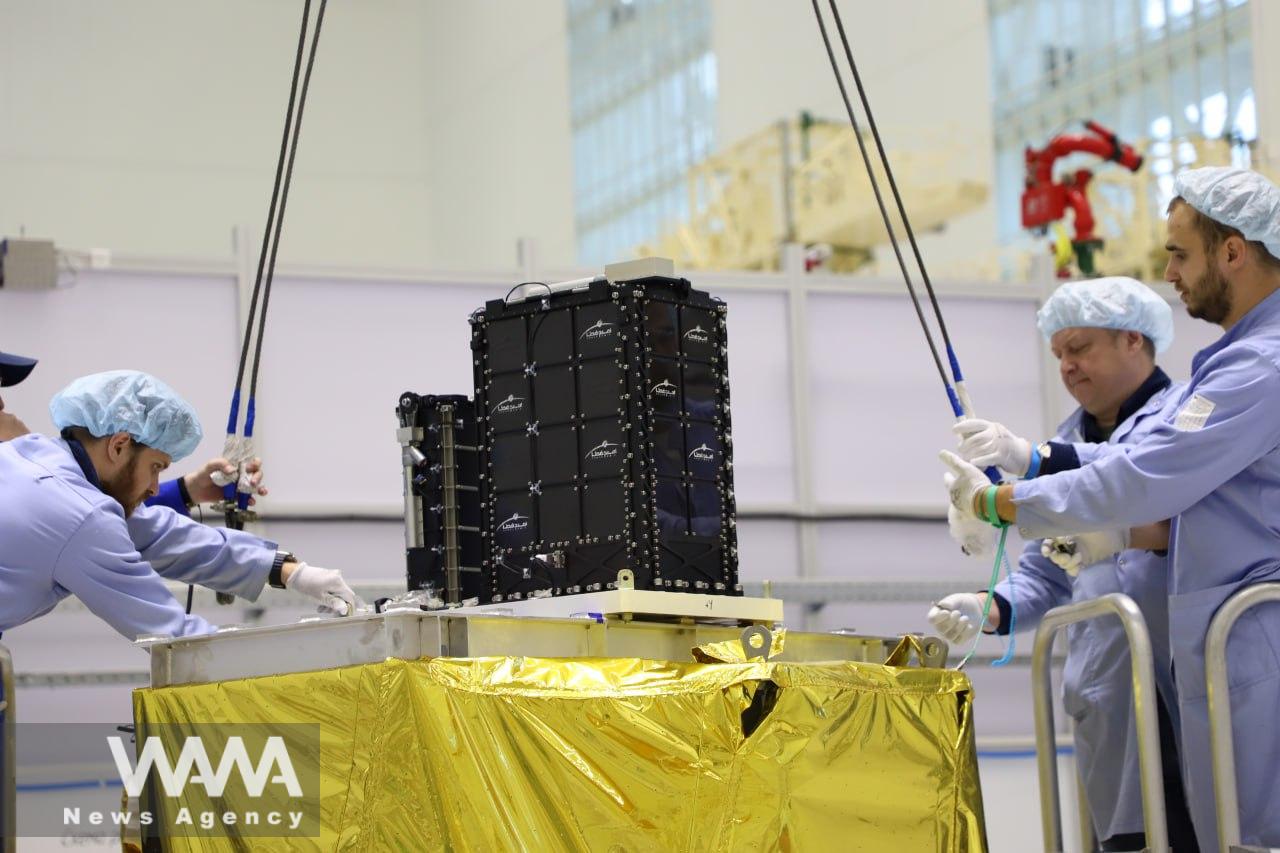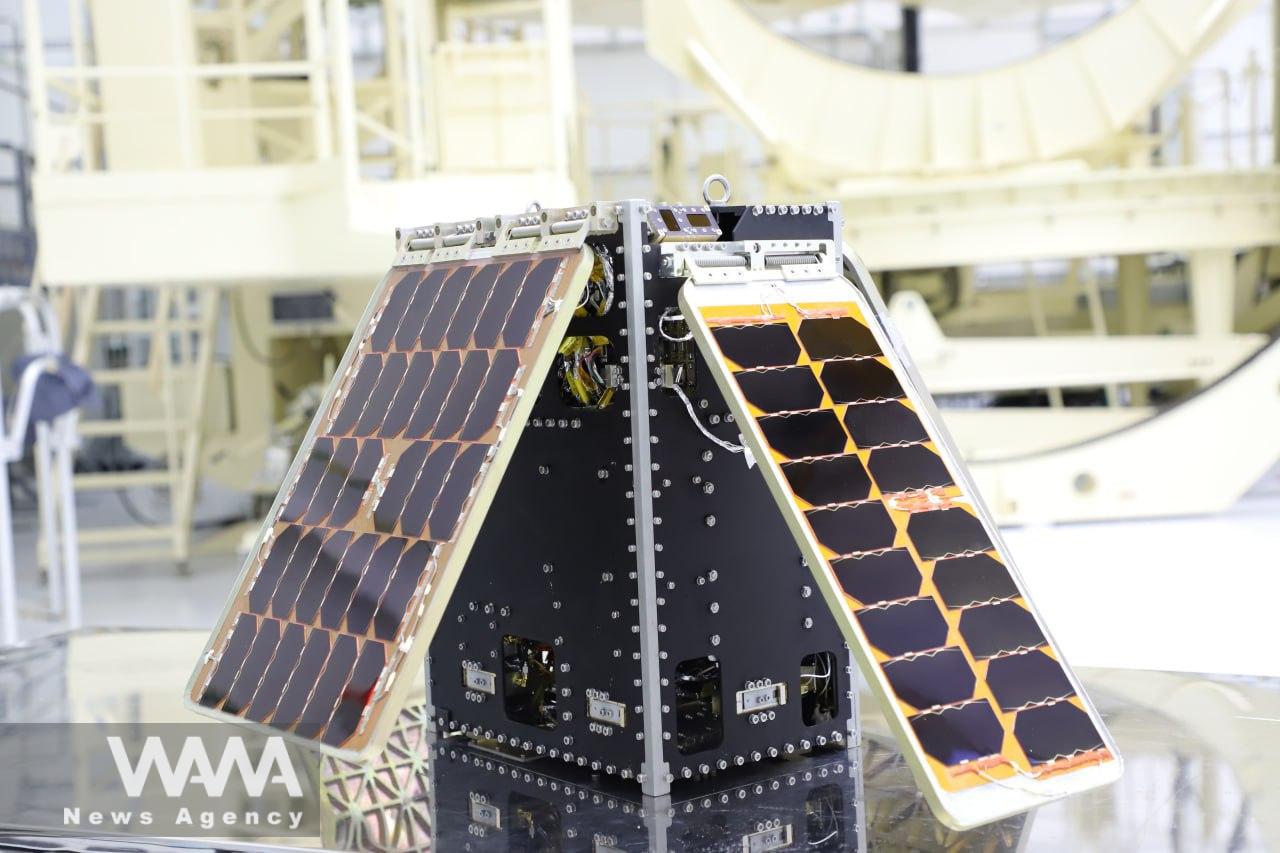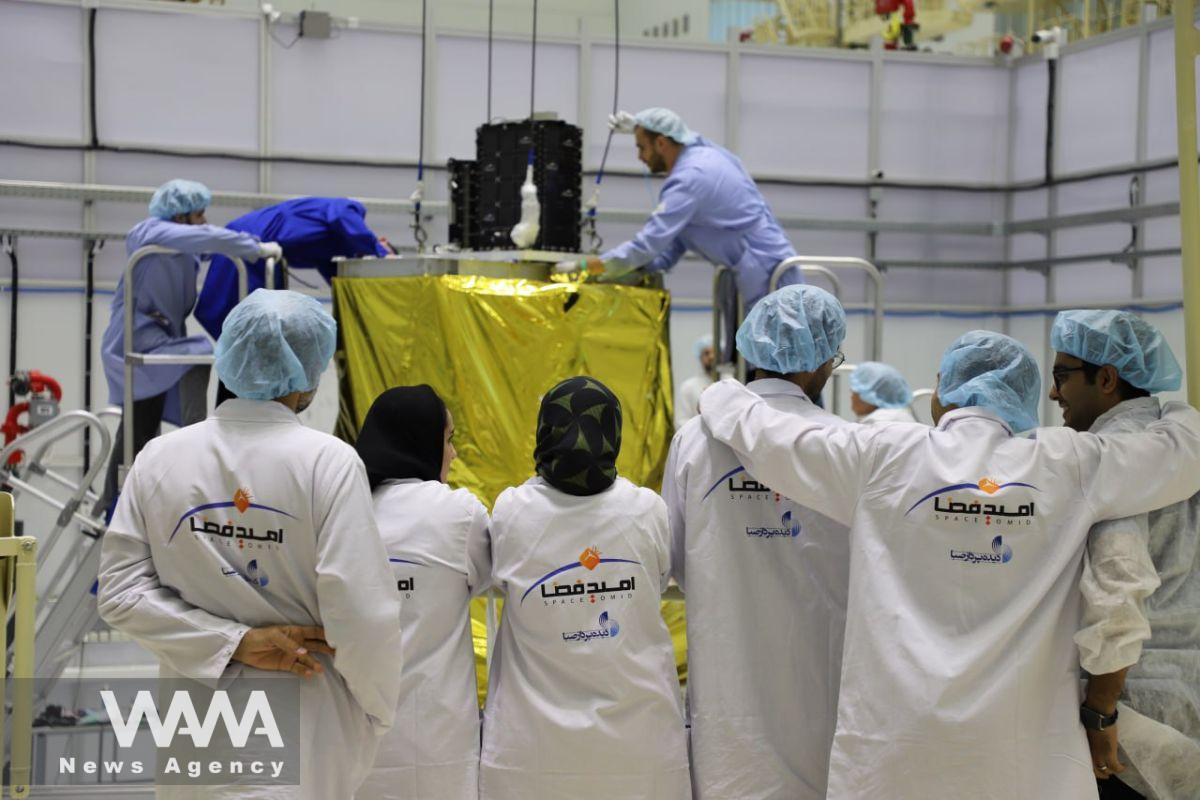Iran to Launch Dual-Mission Satellite with Russian Rocket
WANA (May 10) – Hossein Shahreabi, CEO of the knowledge-based Iranian company Omid Fazā, provided detailed updates on the performance and latest developments regarding two satellites, Hodhod and Kowsar, which were launched into space last year. He also unveiled plans for a new dual-mission satellite and a broader vision for a multi-satellite constellation.
Hodhod Satellite: Full Operational Success
Shahreabi said the Hodhod satellite, launched with a mission focused on telecommunications and the Internet of Things (IoT), has been operating successfully: “All the checklist items for Hodhod were successfully completed. The satellite is currently functioning according to its mission plan.”
He emphasized Hodhod’s international reach: “We developed Hodhod to meet international standards, and over 1,000 ground stations globally have reported receiving data from it. In fact, just minutes before we receive our own status updates, we usually get confirmation from one or two international stations.”
Kowsar Satellite: Setbacks in Ground Communication
In contrast, the Kowsar satellite—intended for Earth imaging and precision agriculture—has faced technical difficulties: “We’ve completed about 70% of Kowsar’s validation checklist. However, we haven’t yet reached the imaging stage due to a communication issue with the ground station.”

Kowsar and Hodhod satellite preparation, Social media/ WANA News Agency
The problem, he explained, stemmed from a technical mismatch: “The specifications of the ground station did not align with the satellite’s antenna as expected. This has prevented us from establishing a stable link with Kowsar.”
A solution has been implemented: “We’ve now made the necessary modifications to the ground station, and we’re in the final testing phase. If the tests are successful, we expect to move to the imaging phase soon.”
New Satellite to Combine Dual Missions
Looking forward, Omid Fazā has already begun building a new satellite that integrates the missions of both Hodhod and Kowsar—IoT communication and agricultural imaging—into a single platform.
“Regardless of the final outcomes of Hodhod and Kowsar, we’ve initiated development of our next satellite, which combines both missions. We’ve conducted compatibility tests with the launch vehicle and are aiming for a mid-year launch.”

Kowsar and Hodhod satellite preparation, Social media/ WANA News Agency
Russian Soyuz Rocket to Launch New Satellite
Shahreabi confirmed the new satellite will be launched via a Russian Soyuz rocket: “Internally, we refer to it as Kowsar Version 1.5. Its international name is TwoSee-1, meaning ‘the first satellite of the TwoSee constellation.’”
The name TwoSee references the satellite’s dual observation capability—covering both IoT and imaging.
Building Toward a Global Satellite Constellation
The ultimate goal, Shahreabi said, is to establish a multi-satellite constellation that performs both functions on a global scale: “We’ve already tested each mission type through two separate launches. Now it’s time to combine them into one platform. This will be the first trial for our future large-scale constellation.”
He added: “If we consider Hodhod and Kowsar as IOD-1 and IOD-2 (Initial Orbit Demonstrations), then this new satellite is IOD-3. We plan to launch six or seven satellites in total for testing before we reach the final operational configuration.”

Kowsar and Hodhod satellite preparation, Social media/ WANA News Agency
Call for Regulatory and Governmental Support
In closing, Shahreabi called for broader institutional and governmental support, particularly in risk management for high-tech innovation:
“We want to position our company and satellite constellation on the global stage. The Seventh Development Plan and recent legislation on knowledge-based companies show some awareness of the need to support technological risk. But in practice, we’ve faced challenges with oversight bodies. The current legal framework is still weak when it comes to covering innovation risk.”
He urged greater collaboration: “We’ve tried to cooperate, and we hope other private sector players will also enter this field. Broader engagement and support are essential if we’re to build a competitive space industry.”












